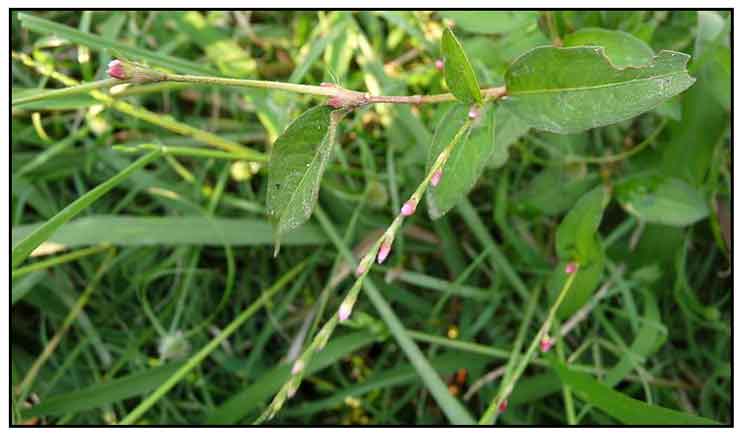
Family • Polygonacea
Drooping knotweed
Polygonum pubescens Blume
Fumao liao
| Scientific names | Common names |
| Persicaria flaccida (Meisn.) Nakai ex Sasaki | Drooping knotweed (Engl.) |
| Persicaria flaccida (Meisn.) H. Gross | |
| Persicaria pubescens (Blume) H. Hara | |
| Polygonum doneii Meisn. | |
| Polygonum flaccidum Hook. f. | |
| Polygonum hispidum Buch.-Ham. ex D.Don | |
| Polygonum pubescens Blume | |
| Polygonum orzetorum Blume | |
| Polygonum pubescens Blume is an accepted name The Plant List | |
| Other vernacular names |
| CHINESE: Fu mao liao, Ban jiao cao, Chui liao, La liao cao, Ruan jing shui liao. |
| JAPANESE: Bontoku tade. |
| MARATHI: Sisori. |
| NEPALI: Pire. |
Distribution Constituents Properties Studies Availability |
Updated October 2018 / November 2015
![]()
 |
| IMAGE SOURCE: File:Persicaria pubescens.JPG/ Show_ryu / 4 Oct 2010 / GNU Free Documentation License / Wikimedia Commons |
Additional
Sources and Suggested Readings |
| It is not uncommon for links on studies/sources to change. Copying and pasting the information on the search window or using the DOI (if available) will often redirect to the new link page. |
• |
 |
• |

 Botany
Botany